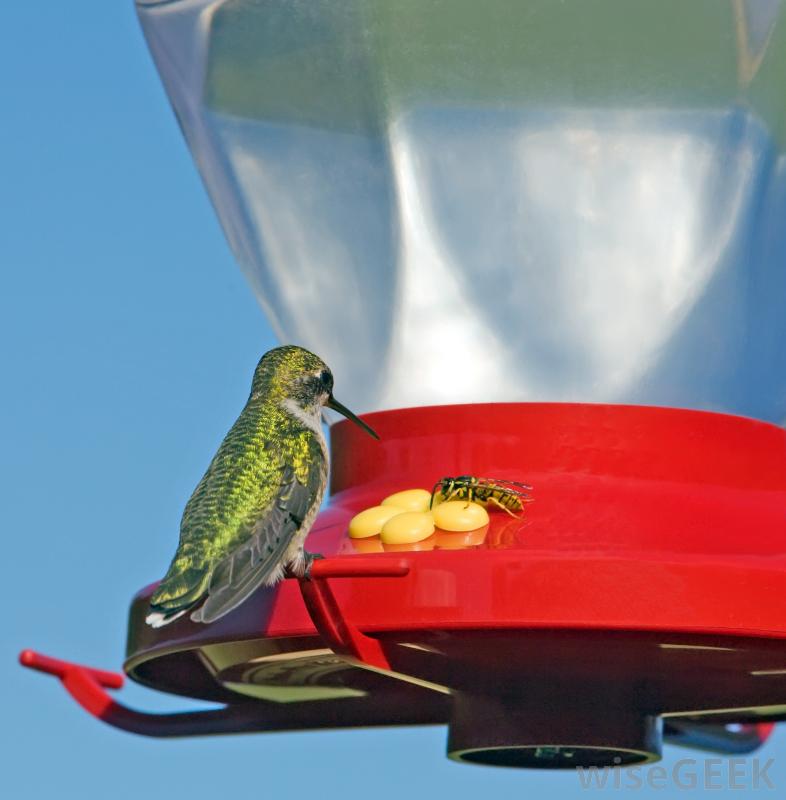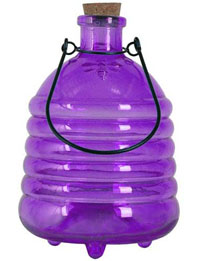Hummingbirds love the delicious sweetness of nectar. Unfortunately, so do insects like ants, wasps and bees. But thanks to a few products and various tactics, you can ensure your hummingbird feeders are free from annoying and potentially harmful insects.

What Insects Love Hummingbird Feeders?
According to estimates, there are about a quadrillion ants on earth at any given time, so it’s no surprise that ants will find their way to your hummingbird feeder. When ants stumble upon something sweet, like the nectar at your hummingbird feeders, they’ll leave an invisible trail for other ants to find. In just a short time, you could have hundreds of ants marching straight toward your feeders.
Flying insects like yellow jackets, bees and wasps can also be a major problem. It might not seem like a big deal to have a few yellow jackets coming around your hummingbird feeders, but they can be aggressive toward hummingbirds and even attack. Leaving bees unchecked can also lead to swarms, which will scare off your hummingbirds.
What You Can Do About Ants at Hummingbird Feeders
Buy a dripless feeder
If you want to keep bugs away, don’t give them a chance to get a waft of the sweet nectar. A dripless feeder requires a hummingbird’s long and slender tongue to retrieve the nectar and it also prevents the smell from getting into the air.

Ant Moat
Add an ant moat
When ants are making a beeline for your feeder, not much will stop them—except for an ant moat. wasp traps are surprisingly simple creations that attach to the top of your hummingbird feeder and prevent ants from coming down onto it by creating a small water moat that ants can’t cross. This is by far one of the simplest and most effective ways to stop ants.
Move the feeders to a different location
A quick solution to swarming bees and insistent ants is to move the feeders. Insects aren’t the most logical or perceptive so even moving your hummingbird feeder several feet away will sometimes throw them off the scent.
Take the feeders down for a few days
Going a little further on the previous suggestion, you can actually just take down the feeders for a few days if the problem is too severe. Insects, particularly flying insects, will typically return to the same spot day after day, so just moving it a few feet over might not always work. To really throw them off the scent and stop them from coming back, take them down until you see that the insects aren’t coming around anymore.

Keep things tidy
Similar to how you avoid unwanted pests and critters in your kitchen, keeping your feeders clean will help keep insects away. Even if you have a dripless feeder, hummingbirds themselves may still make a mess when they’re eating, so it’s important to regularly wipe down and clean your feeders.
Avoid the color yellow
Yellow feeders may look nice, but they also look nice to flying insects. The color yellow is particularly attractive to bees, so opt for red hummingbird feeders or repaint yellow parts red.
Hang wasp traps
If wasps are the main culprits, put up wasp traps near your hummingbird feeders. These are usually small containers where you put highly concentrated sugar water to attract the wasps. Once they enter the trap, they’re unable to get out.
Don’t use any insecticides or oils
Although insecticides and oils are often cited as ways to keep insects away, they are very harmful to birds. Spraying anything that kills insects or repels them usually has the same effect on hummingbirds. By following the previous tips, you can get rid of insects without resorting to these methods.



